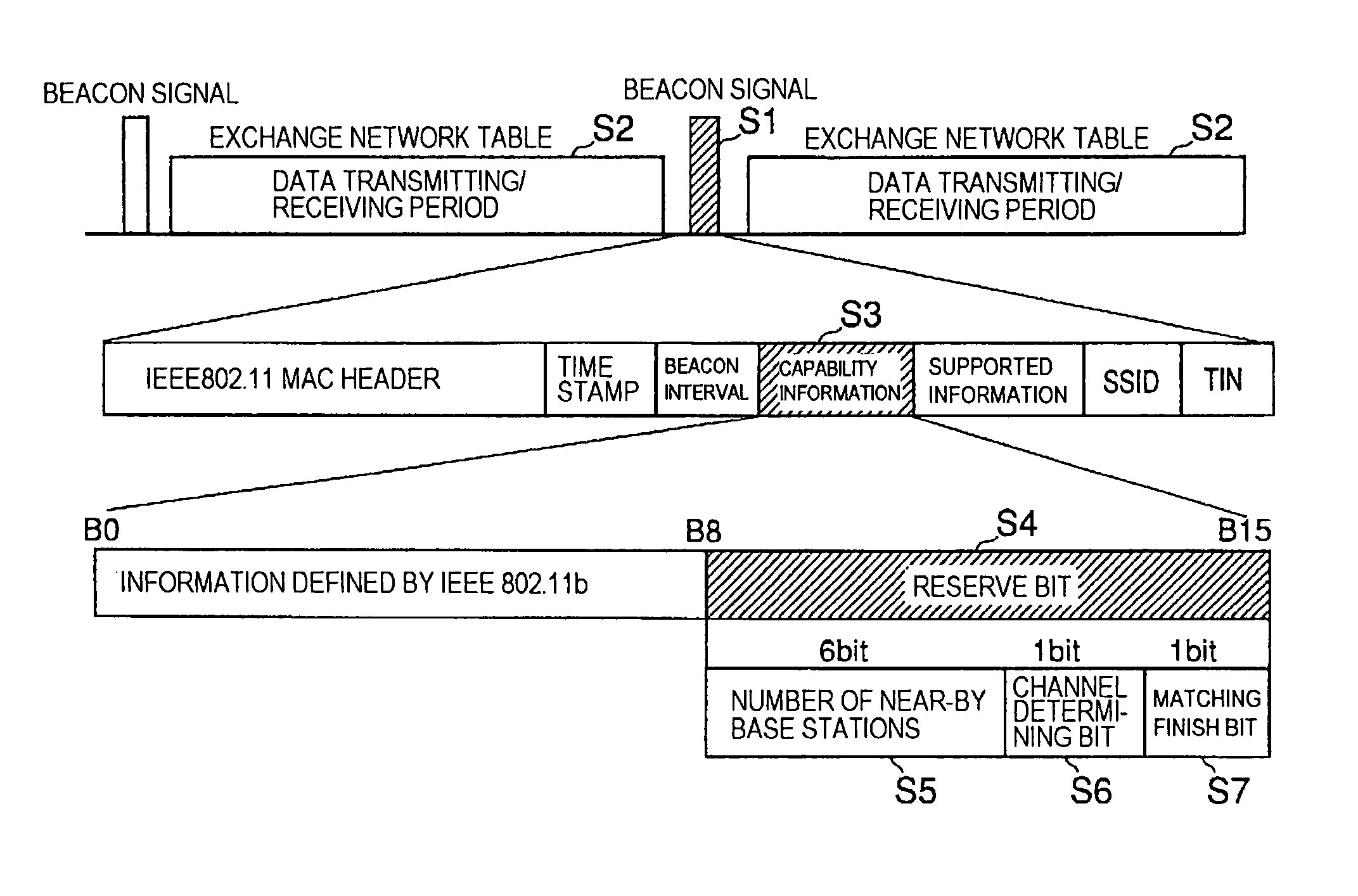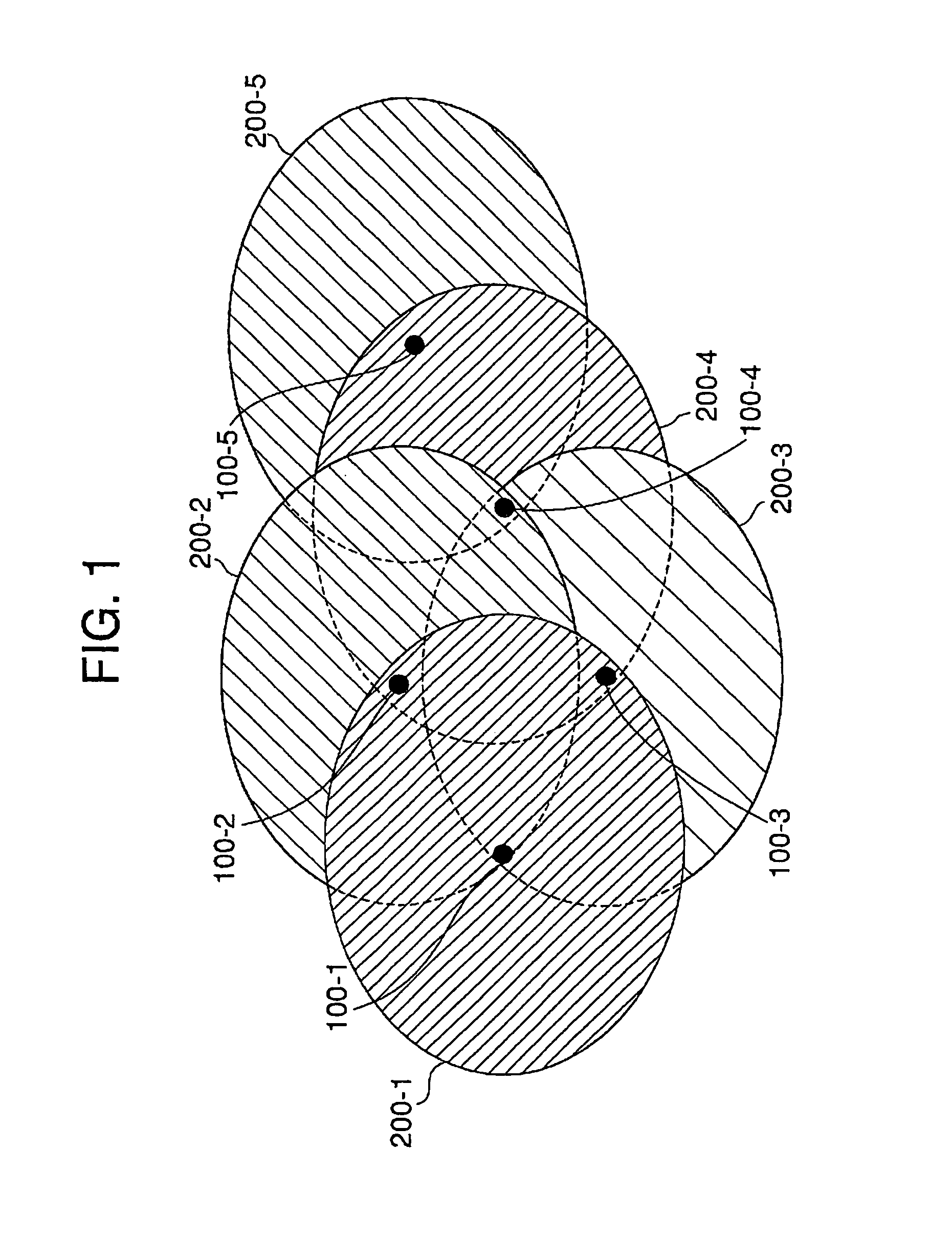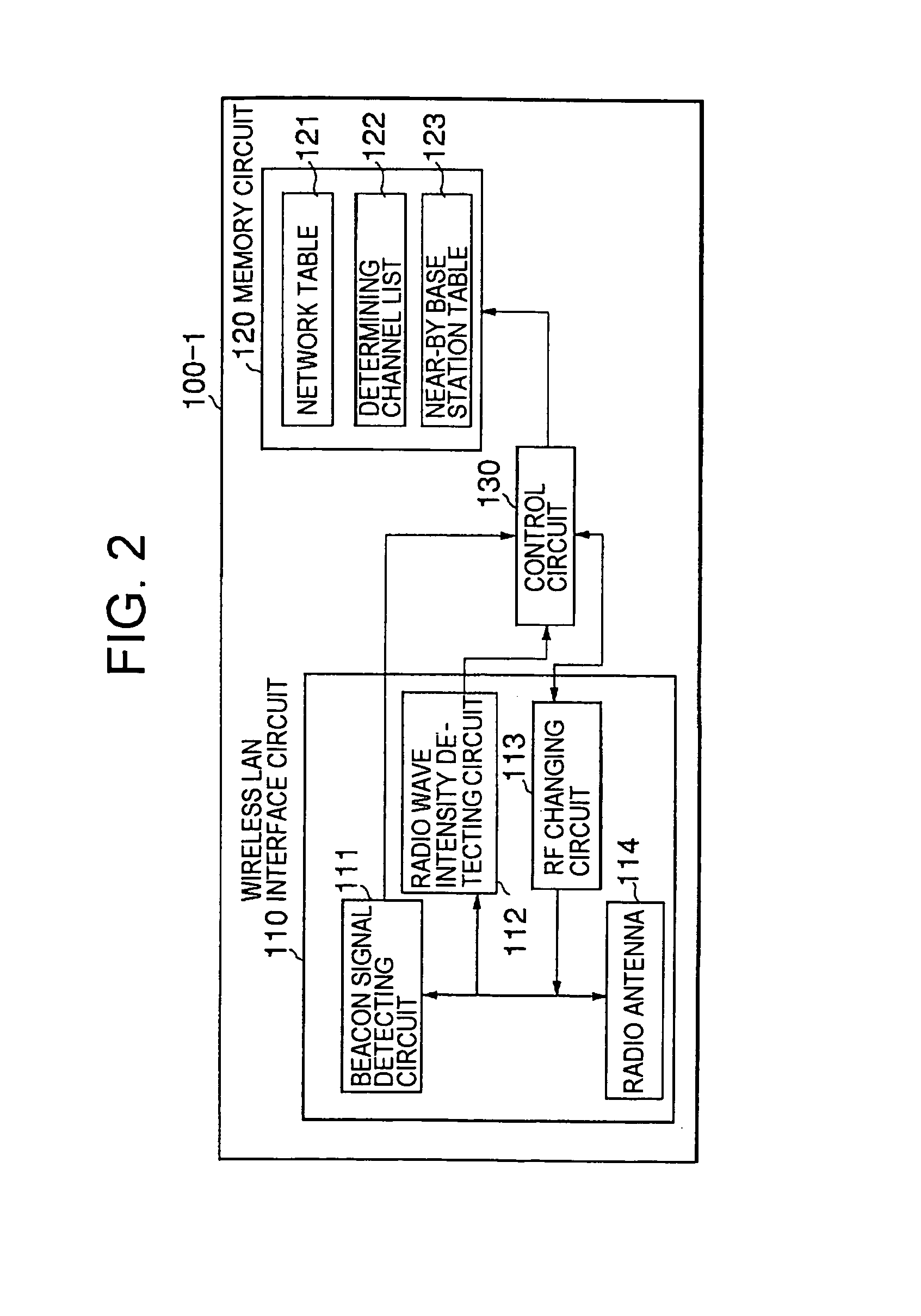Wireless LAN base station capable of carrying out automatic matching for radio channels
a wireless lan and radio channel technology, applied in the field can solve the problems of increasing affecting the operation of wireless commuication services, and affecting the operation so as to avoid interference, the radio channel setting of each wireless lan base station is difficult, and the number of wireless lan base stations also increases
- Summary
- Abstract
- Description
- Claims
- Application Information
AI Technical Summary
Benefits of technology
Problems solved by technology
Method used
Image
Examples
first embodiment
[0070]Now, the method of automatic matching for radio channels by a base station according to the present invention will be described in detail.
[0071]The base station performs an active scanning stipulated by the IEEE 802.11 for a previously selected period of time (F1 in FIG. 4) (first means), and records in a near-by base station table 123 a sender's MAC address, SSID value, and channel value from beacon signals S1 received by respective frequency bands. In continuation, the base station sums up the number of pieces of the SSID value on the near-by base station table 123, or the number of MAC addresses or the number of SSID values of the base stations transmitting the beacon signals S1, and stores the summed up number in the network table 121 as the number of near-by base stations (second means).
[0072]The base station redefines the number of the near-by base stations S5 in the reserve bit S4 of the capability information S3 of the beacon signal S1 transmitted by the self base stat...
second embodiment
[0076]Now, the method of automatic matching for radio channels by a base station according to the present invention will be described.
[0077]The base station records the radio wave intensity, radio channel, and MAC address of the received beacon signal S1 in the near-by base station table 123 of the memory circuit 120 by each SSID (base station zone identifier) value of the beacon signal S1 (fifth means). The base station refers to the reserve bit S4 of the capability information S3, and stores the number of the near-by base stations S5 in the near-by base station table 123 (sixth means).
[0078]As an application in the industry, the base station checks the radio wave intensity of respective base stations, when the number of the near-by base stations S5 exceeds 4. The base station judges that the numbers of the radio channels are crowded when more than the preset number of the near-by base stations is received by strong radio wave intensity (for example, when three or more near-by base...
third embodiment
[0082]Now, description will be made about the method of automatic matching for radio channels by a base station according to the present invention.
[0083]The base station transmits the information of the near-by base station table 123 to the near-by base stations (seventh means), and collects the number of the near-by base stations in the network (F3 in FIG. 4) (eighth means), which is then written in the network table 121. The base station further performs receiving operation for the preset period of time, and creates a connection system table (not shown) with the received base station information as the network table 121. The base station transmits the information of the created network table 121 to the near-by base stations during data transmitting / receiving period (S2 in FIG. 5) (F6 and F7 in FIG. 4). The base station sorts the received network table 121 by the MAC address, compares the connection system with the number of near-by base stations (Y12 in FIG. 9) by an ID indicating...
PUM
 Login to View More
Login to View More Abstract
Description
Claims
Application Information
 Login to View More
Login to View More - R&D
- Intellectual Property
- Life Sciences
- Materials
- Tech Scout
- Unparalleled Data Quality
- Higher Quality Content
- 60% Fewer Hallucinations
Browse by: Latest US Patents, China's latest patents, Technical Efficacy Thesaurus, Application Domain, Technology Topic, Popular Technical Reports.
© 2025 PatSnap. All rights reserved.Legal|Privacy policy|Modern Slavery Act Transparency Statement|Sitemap|About US| Contact US: help@patsnap.com



